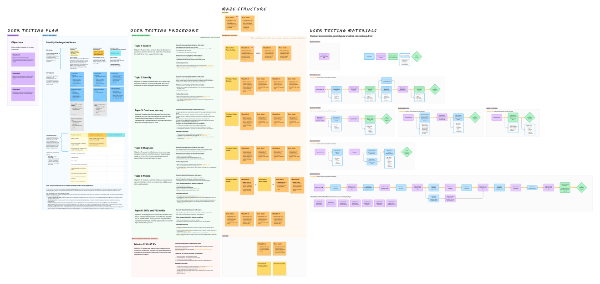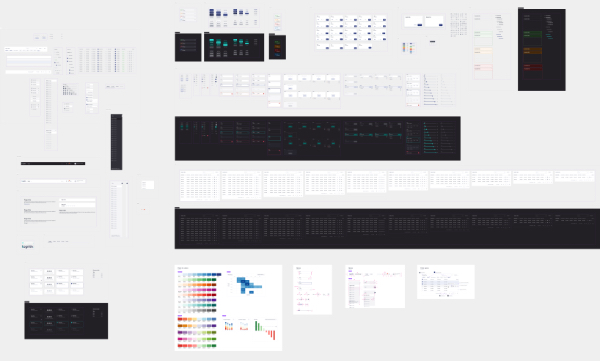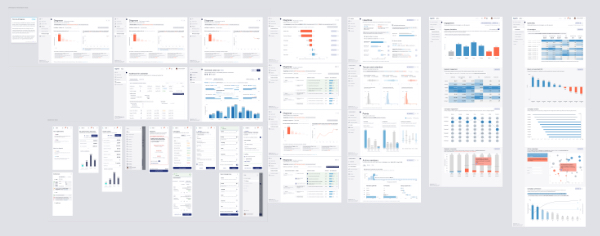Design has been my full-time job and passion for 30+ years.
I've worked in all areas of design during that time: print, typography, advertising, web, mobile, UI, UX/CX, design research, design management. I've lead design teams, created foundational design UI/UX systems and standards for product lines, managed innovation lab budgets, mentored designers, directed organizational design strategies for companies with offices around the world culminating a wide range of experience and design learning.
I use validated design principles, standard design processes and methodologies, qualitative and quantitative data, and primary and secondary research to solve design problems and create effective design strategies. To do design right, you first have to understand and define the problem, then design the solution. I then use my experience to iterate parts of the holistic design process depending on the business, project, and end user's specific needs and goals.
Looking for new opportunities in spring 2025, after designing for more than 30 years, I realised that I have never really needed a traditional portfolio. Potential employers have always just looked at some brief snapshots of past work and loved it, talked with me to find out how deep my design knowledge is, and that's kept me successfully moving through the ranks of design from Junior through to Director level roles over those three decades.
Controversially, I'm also one of a growing group of long-time design practitioners who have started to question the value of a visual portfolio. Much like I ask in design work "Why are we doing this that way?" I do the same to the practice of needing a portfolio review for young designers. Portfolios were always a legacy concept, often conflating user interface design with user experience design. You can't do UI/UX design without requirements and user insight, and when it comes to portfolios that’s all missing. How can you know what a reviewer wants to see; what use cases or user stories are important to their business or, more importantly, their end users?
That said, after 31 years in a successful design career, I'm being asked for a portfolio. What I show here are three high-level examples of work in the last five years to illustrate and reflect who I am as a design thinker. I've also created a portfolio PDF to download if you prefer.

UX Research. UX research helps quantify and identify gaps in expectations and functionality of a design. It validates all of the other work done in the first half of designing; customer journey maps, personas, primary research, ideation exercises, thematic clustering, and assumptions about what a client really wants. The reports that are summaried post-research form a demonstrable foundation to move forward (or iterate) a design and can be used by stakeholders across an organization as evidence for moving a product in a specific direction. My UX research methodologies are meticulously planned and follow best design practice processes to ensure that what we learn is quantified and actionable.

Design Systems. A consistent UX/UI across an entire suite of a company's products builds trust, eliminates an end user needing to learn new patterns in different products from the same company, and provides developers, engineers and Product Managers a standard UI and UX library of components to develop products for all use cases. The best planned design systems are built to accommodate every current need, all of the basics from typography and colour, through functional interactions, and are designed to use components that illustrate every potential state of interaction in a design IDE like Figma so that engineers have the specifications and states to build the right UI. This particular design library was used across five distinct products, data analytics panels, and was robust enough to only need small additions over almost three years of continuous use, development work, and client requests.

Design & Problem Solving. Solving design opportunities for a wide range of end users in a suite of products that need to be responsive, easy to understand, and allow users to efficiently understand information and act on critical data points is another aspect of what I do as a design manager. Design leadership means helping UXR team members ask the right questions so that UX and UI designers then can have goals to design towards that satisfy a customer's experience. Designing a best-in-class user experience means using qualitative and quantitative data and a design methodology to create things to help users do their job, and provides the simplest way to achieve a goal by understanding how a user actually works. These AI-native customer insight and campaign activation products allowed CMOs, campaign marketing managers, brand managers, and sale-marketing executives in top 100 global retailers target customized loyalty offers to 230,000,000 end users in the global retail space, and were recognized as a Top 10 Product Innovation by the editors of The Martech Weekly, and allowed two of those retailers to be recognized as having two of the top-three ranked loyalty programs in North America.
My strength in design is the way I think about, explain, and passionately advocate for customer-centric CX and UX design.
How I talk about design, understand problems, communicate and share solutions, and guide design teams to create stunning experiences for users over the past 30+ years. It's the perfect representation of who I am as a person and a designer. I've won design awards, show and explain my designs, and can explain design thinking and processes and the best ways to solve a UX/CX problem to C-levels and the bright design university co-op students and junior designers that I've had the privilege of mentoring. It's my curiosity, passion, and love of design (and those 30+ years of doing and learning) that are the main things that I would love to offer to you in a director level UX position.